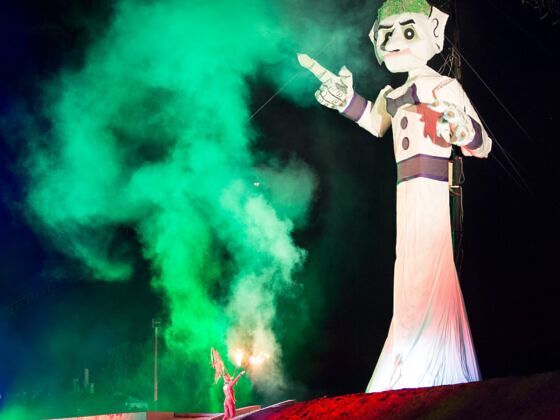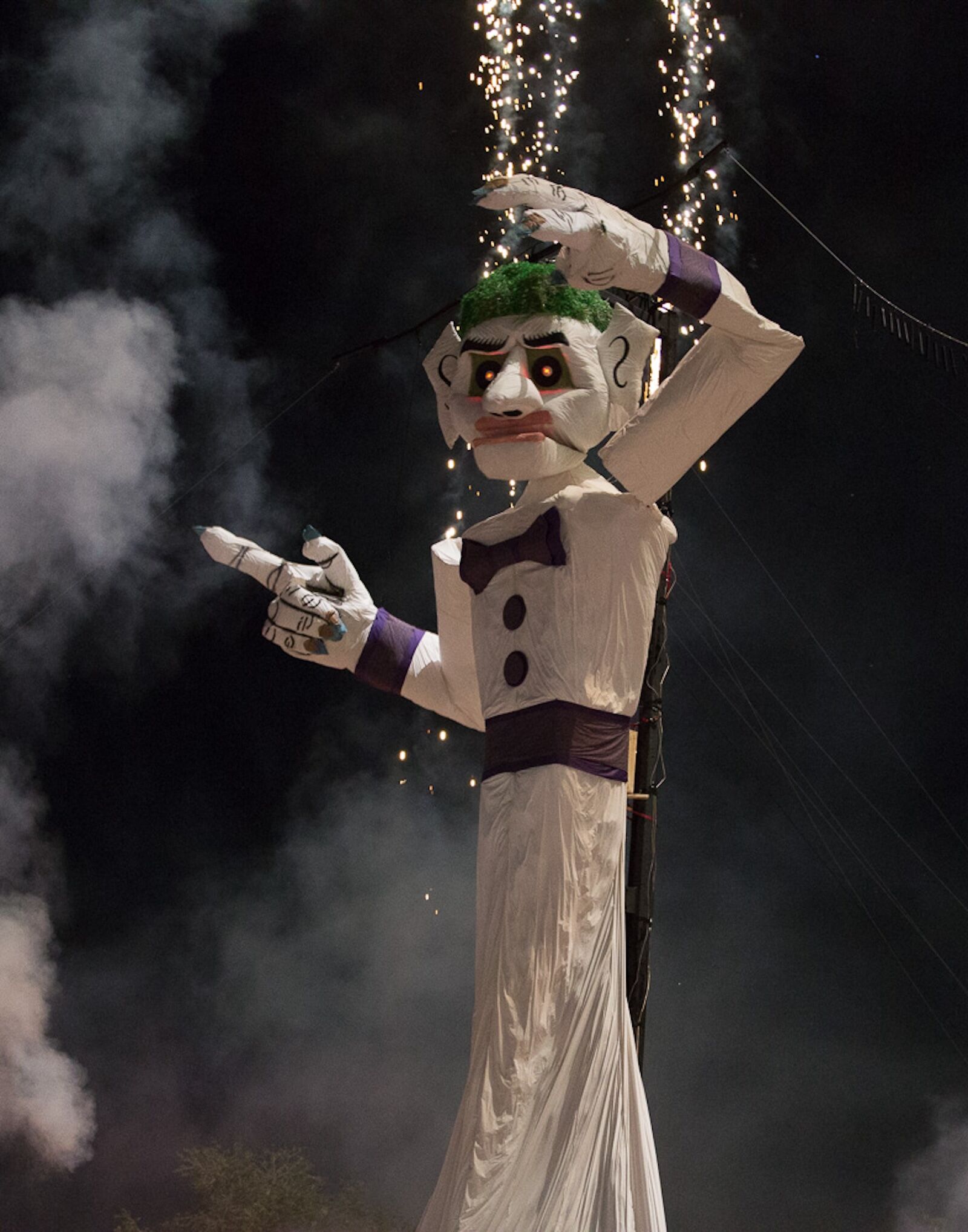Regardless of how you feel about Burning Man, there’s no denying that it’s become a cultural symbol for better or for worse with impressive art installations and collaborations in the desert that are then reset by fire. Burning Man started in 1986. More than half a century before, people in Santa Fe, New Mexico, were already using fire as a cleanser with the Burning of Zozobra.


Santa Fe's 'Burning of Zozobra' Turns 100 This Year, and There's Never Been a Better Time to Burn Your 'Glooms'
Every year since 1924, Santa Fe has hosted the Burning of Zozobra. The “Old Man Gloom” is a 50-foot-6-inch tall marionette that’s stuffed with pieces of paper that participants have added to represents something negative in their life that they are ready to move on from — the “glooms.” Once those are all added, Old Man Gloom weighs some 3,000 pounds. Then the whole thing is set on fire.
Zozobra is not just a marionette stand-in, either — he can move his arms and head, and the mouth opens to emit a growl. The Fire Spirit, a component of the event for decades and now played by Santa Fe dancer Helene Luna, dances toward the creature in a headdress, red costume, and two torches to end Zozobra’s rath.
Over 60,000 people attend the event every year, and hundreds of thousands turn on the livestream to watch online. Zozobra Field at Fort Marcy Park is filled with live music, dance performances, food trucks, a beer garden, and merchandise booths. It’s all a lead up to the burning itself, which includes a fireworks display. The whole experience is kid friendly (though for safety reasons strollers and wagons aren’t allowed).
This year, the 100th anniversary calls for some special features. A 130-food-tall hot air balloon shaped like Zozobra will fly on August 30 (and at the 2024 Albuquerque Balloon Fiesta). Well-known Santa Fe artists collaborated on 32 painted, 4-foot-tall Zozobra figures that have been around the city since May in a public art project. New Mexico’s Gruet Winery, which makes some of the best affordable sparkling wine in the country, is making a 100th anniversary bubbly, and Santa Fe Brewing is creating a collaboration craft beer. A musical about Zozobra is set to premier, and the New Mexico History Museum and New Mexico Museum of Art have special exhibits starting in March.
It wouldn’t be a full experience without knowing your own gloom is going up in smoke at the main event, of course. Glooms can be added up until 8:00 PM either online or at a designated Gloom Box (locations are around Santa Fe, though there’s also a box on the grounds for last minute additions). You don’t have to overthink your gloom, you just need to have it on paper. Common glooms include handwritten notes, photos, divorce decrees, and legal papers and police reports (just make sure you don’t need them again).
To put it succinctly, there’s no better time to see the official burning of Zozobra — whether it’s for the first time or the hundredth.
How Zozobra started

Photo: Tourism Santa Fe
Though it’s a public spectacle today, Zozobra’s roots started at a private party for the New Mexico artist and writer group Los Cinco Pintores in 1924. Artist William Howard Shuster, Jr. created the first one drawing inspiration from the Yaqui Indian Easter Holy Week tradition of parading a Judas effigy on a donkey before setting it aflame. The name comes from the Spanish word for “anguish, anxiety, or gloom,” and was picked by Shuster and his friend and newspaper editor E. Dana Johnson.
Back then, it was only the height of the average adult man and burned in his backyard. The marionette has always been part ghost and part monster, and frankly something that is kind of nice to see go up in flames.
The first public burning was in 1926. The Santa Fe New Mexican covered the event in the September 2, 1926 edition, according to the official Zozobra site:
“Following vespers at the Cathedral, a long procession headed by the Conquistadores Band marched to the vacant space back of the City Hall, where Zozobra, a hideous effigy figure, 20 feet high, produced by the magic wand of Will Shuster, stood in ghastly silence, illuminated by weird, green fires. While the band played a funeral march, a group of Kiwanians in black robes and hoods stole around the figure, with four others seated before the green fires.”
Shots were fired at Zozobra, the bonfires ignited, and the whole thing lit up in flames and fireworks before dances and “the biggest crowd of native merrymakers seen here for years,” the report continued.

Photo: Tourism Santa Fe
Shuster himself was involved in the Zozobra construction until 1964. That year, he passed his model, scripts, and archive drawings to the Kiwanis Club of Santa Fe. They continue the tradition to this day, including a note that Will Shuster sent after that first burning: “After the flames consumed the effigy, and the embers faded into the starlit Santa Fe sky, we stood together, a group unburdened. In the ashes of this effigy lay the worries of the past year, and from them, we shall rise anew, our spirits ablaze with hope and renewal. Tonight, we have not just witnessed a spectacle; we have participated in a sacred rite of purification, laughter, and rebirth.”
Getting to Zozobra for the 100th anniversary celebration
The main event happens on August 30 this year (it’s traditionally on the Friday before Labor Day), though Zozobra activations throughout Santa Fe make an earlier arrival worthwhile. Plan to stay longer, as it’s only the start of the Fiestas de Santa Fe where cultural celebrations abound.
Event tickets often sell out, but you can purchase them online on the event page ($35 for general admission when purchased ahead of time or $40 at the gate, but kids 10 and under are always free). The gates open and entertainment starts at 4:00 PM, with official ceremonies beginning at 6:00 PM. Don’t get there later than 8:00 PM to catch the main event — and note that the burning happens rain or shine.
The event takes place at Zozobra Field at Fort Marcy Park in Santa Fe. Shuttles will run from the South Capital Rail Runner station until 8:30 PM.